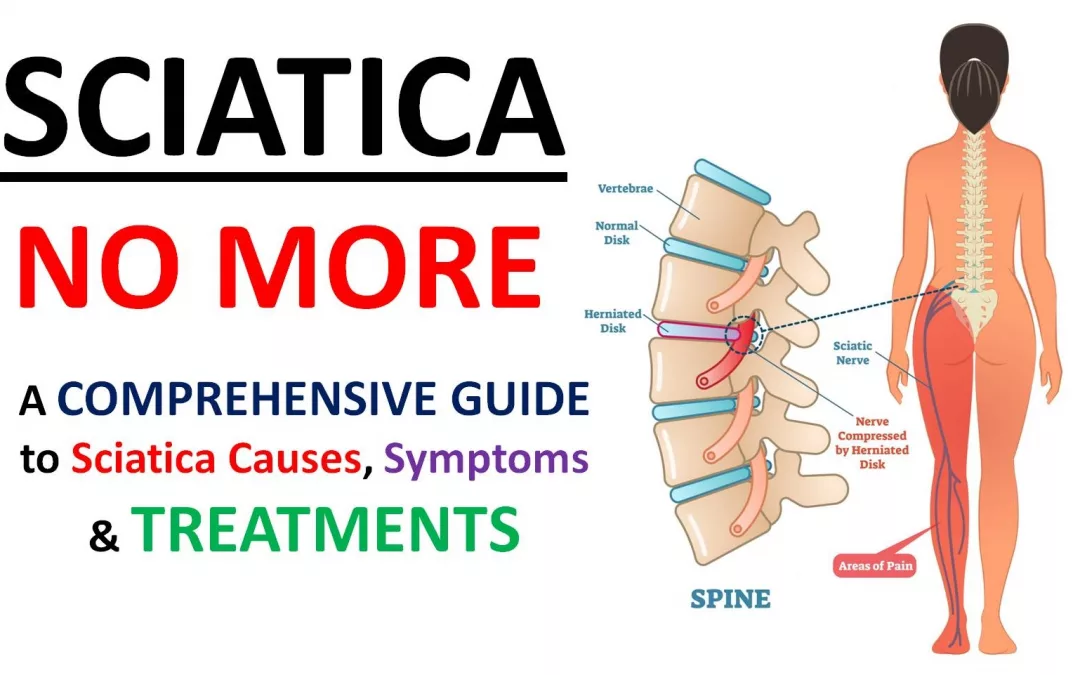What is Sciatica?
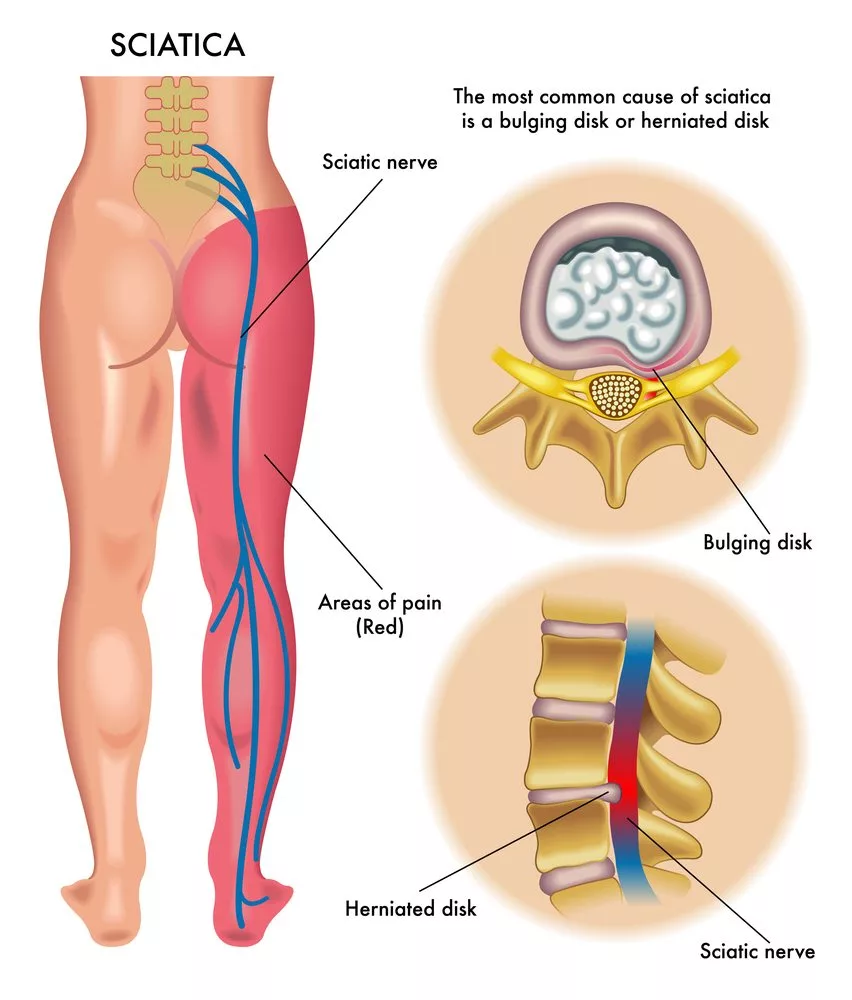
Sciatica is a common yet often misunderstood condition that affects millions of people worldwide. Sciatica, also called lumbar radiculopathy, is a pain that originates along your sciatic nerve. It refers to the pain that originates in the sciatic nerve, which runs from the lower back down through the hips, buttocks, and legs. In this blog post, we will explore what is sciatica, along with causes, symptoms, and treatment options for sciatica, aiming to provide a comprehensive understanding of this condition.
How Common is Sciatica in United States?
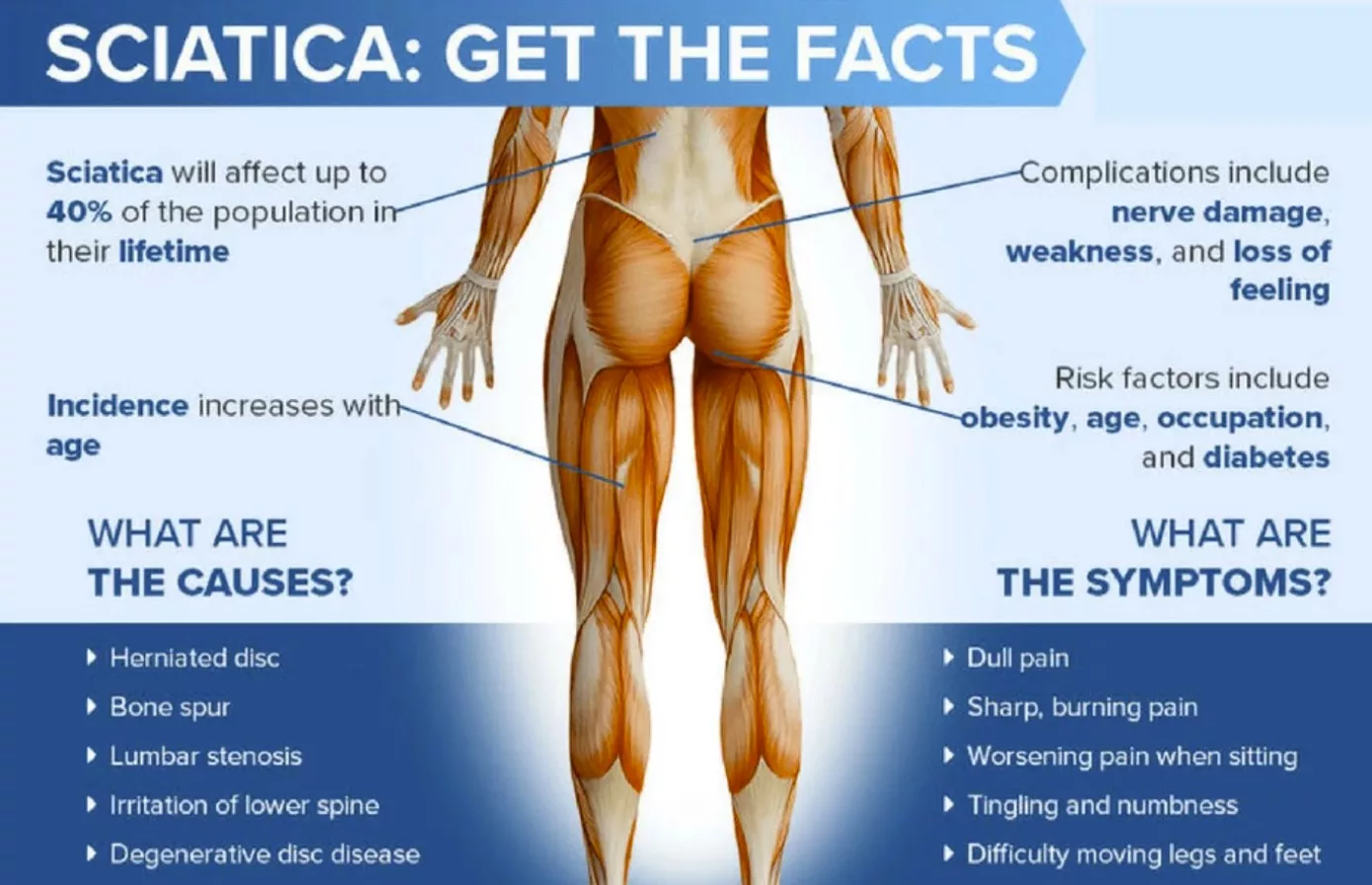
Sciatica is a very common condition. About 40% of people in the United States experience some form of sciatica during their lifetime. It rarely happens before age 20 unless it’s injury-related. “People who suffer from acute or chronic back pain tend to be more susceptible to sciatica,” says Dr. Jeffrey N. Katz, professor of medicine and orthopedic surgery at Harvard Medical School.
Symptoms of Sciatica
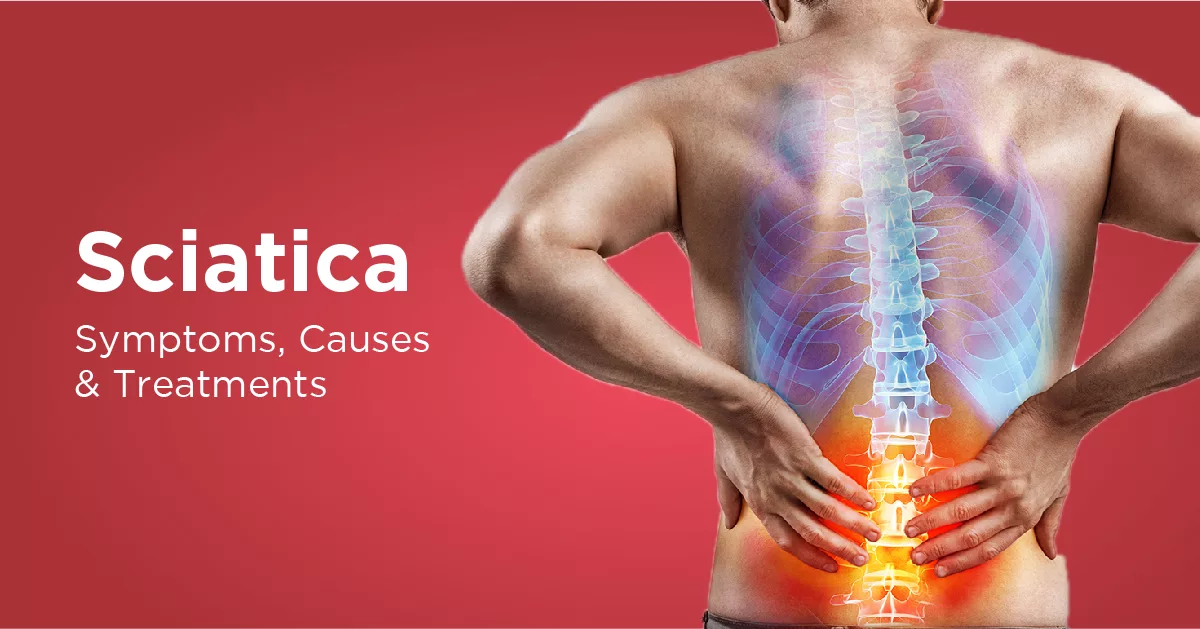
Sciatica is characterized by a range of symptoms that typically affect one side of the body. The most common symptom is pain that radiates along the path of the sciatic nerve, which extends from the lower back through the hips, buttocks, and down the back of the leg. The intensity and nature of the pain can vary from person to person, but it is often described as follows:
Lower Back Pain
Sciatica pain usually originates in the lower back and may be localized or spread across a broader area.
Radiating Leg Pain
The pain extends from the buttocks and travels down the back of the thigh, calf, and sometimes into the foot. The pain follows the course of the sciatic nerve.
Sharp or Shooting Pain
Pain can be sharp, shooting, or electric shock-like, often intensified with certain movements such as coughing, sneezing, or prolonged sitting or standing.
Burning or Tingling Sensation
Some individuals may experience a burning or tingling sensation along the affected leg.
Numbness or Weakness
Numbness or weakness may be present in the affected leg or foot, making it difficult to perform daily activities such as walking or standing.
Difficulty with Leg Movements
The pain and accompanying symptoms can make it challenging to bend the affected leg, lift objects, or perform movements that involve the lower back and leg.
Worsening Symptoms
Symptoms may worsen after long periods of sitting, standing, or physical exertion.
In severe cases, sciatica can cause additional symptoms such as:
Loss of Bladder or Bowel Control
In rare cases, sciatica can lead to a loss of bladder or bowel control. This is a serious symptom that requires immediate medical attention.
It’s important to note that the severity and specific combination of symptoms can vary among individuals, depending on the underlying cause and the extent of nerve compression or irritation. If you are experiencing persistent lower back pain that radiates down the leg or any of the symptoms mentioned above, it is recommended to consult with a healthcare professional for an accurate diagnosis and appropriate treatment.
What Causes Sciatica?
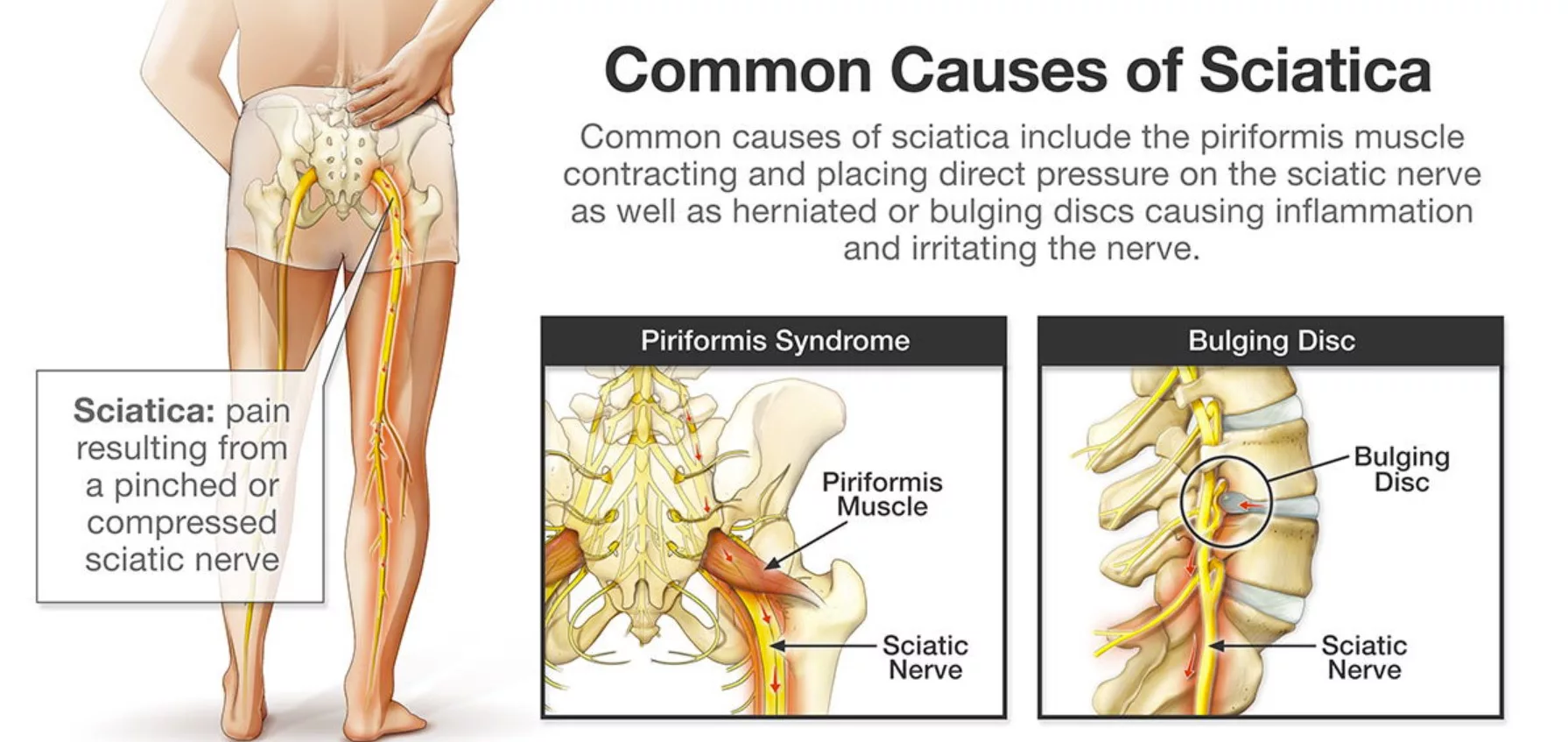
Sciatica can be caused by various factors, with the most common cause being a herniated or slipped disc in the spine. The discs in the spine are gel-like cushions that provide support and flexibility. When a disc becomes herniated or slipped, the inner gel-like material protrudes and puts pressure on the nearby nerve roots, including the sciatic nerve. This compression or irritation of the sciatic nerve leads to the development of sciatica symptoms.
Several other conditions and factors can also contribute to the development of sciatica:
Spinal Stenosis
This is a condition characterized by the narrowing of the spinal canal, which can put pressure on the nerves, including the sciatic nerve. Spinal stenosis often occurs as a result of age-related degeneration of the spine or conditions such as arthritis.
Spondylolisthesis
This condition involves the slippage of one vertebra over another, causing instability in the spine. When the slippage occurs in the lower back, it can lead to sciatic nerve compression and the development of sciatica symptoms.
Muscle Spasms
Spasms or tightness in the muscles of the lower back can compress the sciatic nerve and result in sciatica. Muscle imbalances, poor posture, or muscle strain can contribute to the development of muscle spasms.
Spinal Tumors
Rarely, tumors can develop in the spine and compress the sciatic nerve, leading to sciatica symptoms. These tumors can be either benign or malignant.
Trauma or Injury
Injuries to the spine, such as fractures or dislocations, can cause compression or damage to the sciatic nerve, resulting in sciatica.
Piriformis Syndrome
The piriformis muscle, located deep in the buttocks, can sometimes become tight or spasmodic, causing it to irritate or compress the sciatic nerve. This condition is known as piriformis syndrome and can mimic the symptoms of sciatica.
Pregnancy
During pregnancy, hormonal changes, weight gain, and shifts in the body’s center of gravity can put pressure on the sciatic nerve and lead to sciatica.
It’s important to note that sciatica can also be influenced by individual risk factors such as age, occupation (particularly jobs that involve heavy lifting or prolonged sitting), obesity, sedentary lifestyle, diabetes, and genetic predisposition. Understanding the underlying cause of sciatica is essential in determining the most appropriate treatment approach and managing the condition effectively.
Sciatica Diagnosis
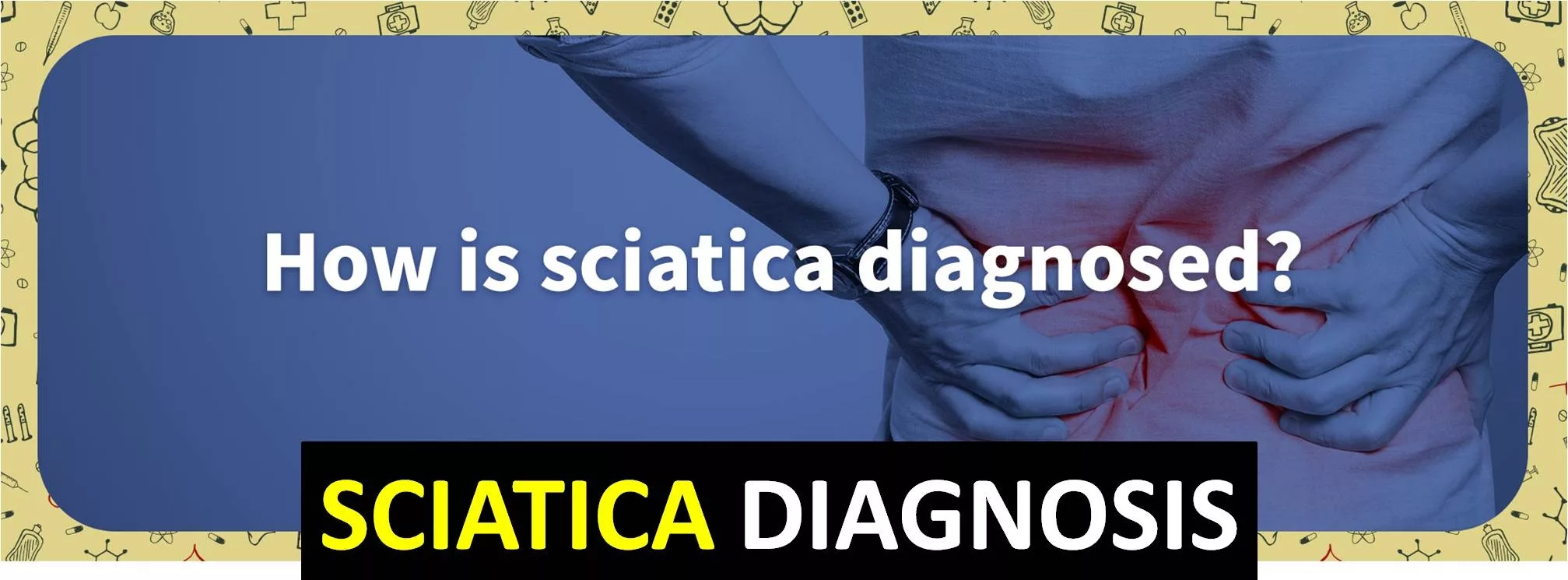
To diagnose sciatica, healthcare professionals typically begin with a thorough physical examination and medical history review. They may also order diagnostic tests such as X-rays, MRI scans, or CT scans to visualize the spine and identify any structural abnormalities or nerve compression. This comprehensive evaluation helps determine the exact cause and severity of the condition, guiding the appropriate treatment plan.
How to Treat Sciatica?

The treatment of sciatica typically depends on the underlying cause and the severity of symptoms. In many cases, sciatica can be managed through conservative, non-surgical approaches. Here are some common treatment options for sciatica:
Pain Medication
Over-the-counter nonsteroidal anti-inflammatory drugs (NSAIDs) like ibuprofen or naproxen can help reduce pain and inflammation associated with sciatica. In more severe cases, prescription medications may be prescribed by a healthcare professional.
Heat and Cold Therapy
Applying heat or cold packs to the affected area can help alleviate pain and reduce inflammation. Heat therapy can relax muscles and improve blood circulation, while cold therapy can numb the area and reduce swelling.
Physical Therapy Exercises
A physical therapist can design a customized exercise program to strengthen the core, improve flexibility, and alleviate pressure on the sciatic nerve. Specific exercises may include stretching, low-impact aerobic exercises, and targeted strengthening exercises.
Epidural Steroid Injections
In cases where pain and inflammation persist, an injection of corticosteroids into the space around the affected nerve root (epidural space) may provide relief by reducing inflammation and suppressing pain signals. These injections are typically administered by a healthcare professional.
Alternative Therapies
Complementary treatments such as chiropractic adjustments, acupuncture, massage therapy, and yoga may offer relief from sciatica symptoms for some individuals. These therapies aim to improve spinal alignment, reduce muscle tension, and promote relaxation.
Lifestyle Modifications
Adopting healthy habits can contribute to managing and preventing sciatica. This includes maintaining good posture, practicing proper body mechanics when lifting heavy objects, engaging in regular exercise, and maintaining a healthy weight.
Surgical Interventions
In severe cases where conservative treatments have not provided sufficient relief or when there is significant nerve compression, surgery may be considered. Surgical options may involve removing the herniated portion of a disc (microdiscectomy), widening the spinal canal (laminectomy), or stabilizing the spine (spinal fusion).
It’s important to consult with a healthcare professional to determine the most appropriate treatment plan for your specific condition. They can assess your symptoms, conduct diagnostic tests if necessary, and guide you towards the most effective treatment options for your individual needs.
Conclusion: Sciatica Pain Relief

Sciatica can significantly impact an individual’s quality of life, causing pain and discomfort. Understanding the causes, symptoms, and treatment options for this condition is essential for effective management. If you experience persistent back or leg pain, it is crucial to consult with a healthcare professional for an accurate diagnosis and appropriate treatment plan. By seeking timely medical attention, you can take the necessary steps towards relieving pain, restoring mobility, and improving your overall well-being.
Call Now +1-407-434-7246
If you have suffered any type of injury or have been experiencing pain that just won’t go away regardless of what you do, then all you have to do is call and speak with our friendly staff. Find Best Sciatica Chiropractor in Orlando, Florida. Our team can help you get the treatment you need and ensure that the pain you experience is alleviated – once and for all.
We are proud to serve the areas of Orlando, Altamonte Springs, Haines City, Plant City, Kissimmee, Winter Haven, and Ocala.
Contact us for Chiropractor near me in Orlando, Florida for an Appointment Today.
What is the main cause of sciatica?
Sciatica occurs when the sciatic nerve becomes pinched. The cause is usually a herniated disk in the spine or an overgrowth of bone, sometimes called bone spurs, form on the spinal bones. More rarely, a tumor can put pressure on the nerve. Or a disease such as diabetes can damage the nerve.
What is the fastest way to cure sciatica?
PT usually involves most rapid relief remedies (icing, heating, massage, stretching, strength, and flexibility exercises) to provide pain relief, eliminate the underlying cause of the sciatica nerve pain, and prevent further injury and flare-ups.
Does sciatica go away on its own?
Milder cases of sciatica generally go away on their own with time and self-treatment. Most people (between 80% to 90%) with sciatica get better without surgery.
What relaxes the sciatic nerve?
Heat can help to increase blood flow around the area of discomfort causing the muscles to loosen, therefore relieving the pressure on the sciatic nerve. A hot bath may provide temporary relief as it relaxes your muscles. Ice helps to temporarily turn off nerve receptors which can help with pain and discomfort.
Can a chiropractor help with sciatica?
While sciatica pain can be debilitating, chiropractic treatment can relieve it gently and naturally. This care entails treating the pain without costly and harmful side effects.


